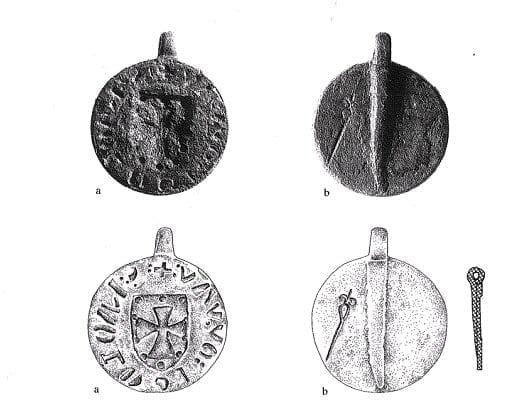
Horvat ‘Aqav and Horvat Eleq – the Crusader Period
The excavations in Horvat ‘Aqav revealed remains of a temporary Mamluk settlement that was built on the ruins of the farm from the Byzantine Period. A clay utensil found in the excavation was dated to the 13th – 16th centuries CE; findings were also found from the Umayyad, Abbasid and Fatimid Sultanates, dated to an earlier period, perhaps evidence of an ancient Arab settlement on this site whose architectural remains have not yet been revealed by the archaeological excavations.
The excavations in Horvat Eleq revealed a metal seal with a shield on its upper section and a cross in its centre, surrounded by a worn inscription in Latin and French. The seal belonged to a local aristocrat, whose name was probably Raoul. The seal was used for making wax seals on documents and certificates during the period of the Kingdom of Jerusalem. This period is called the Crusader Period. During the First Crusade, Jerusalem was conquered and the First Kingdom of Jerusalem was established (1099). The crusaders brought the feudal system (division into principalities, dukedoms, and earldoms) to the Land of Israel. This period witnessed several crusades; some Christians who came from Western Europe settled in the Land of Israel. After several military battles, the Mamluks, who came from Egypt, defeated the Mongols, and in 1260 they finally gained control over the Land of Israel with the conquest of Akko in 1291. The ruling centre of the Mamluks was Cairo and they ruled the Land of Israel until 1516.
